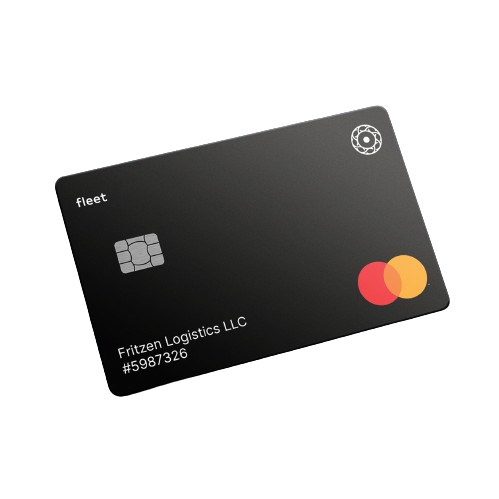With the e-commerce explosion, everyone from economists to consumers can agree that shipping is one of the most critical industries of the modern marketplace. In 2017, the industry broke almost $1.5 trillion in spend, there’ve been no signs of slowing since. 1
For businesses, this means mastering shipping and delivery logistics has become less of a cherry on top, and more of an expectation.
But what’s the difference between the two, and how can shipping firms save for both themselves, and their clients?
Below, we address how shipping and delivery logistics differ, why they matter, and how reducing costs with fuel cards can both boost finances and enhance the benefits of fleet management and performance.
Shipping vs Delivery: What’s The Difference?
Is “shipping and delivery” a single notion, or is it more of a bacon-and-egg situation: two things that pair perfectly, but can be purchased, prepared, and used in isolation?
The truth is, it depends on the perspectives of the business, the consumer, or the particular writer of a contract or marketing offer. In business, the terms shipping and delivery are often used interchangeably.
However, there is a subtle yet important difference between shipping and delivery management.
What Is Shipping?
In business, shipping logistics involves the process of transporting materials or goods of any volume from one location to another. This can be done by:
- Ground (or road) transportation, usually by truck
- Ocean or sea (maritime shipping)
- Train (rail shipping)
- Airplane
Shipping and expedited delivery is a vital part of the supply chain as it gets goods from point A to point B—without it, businesses wouldn’t be able to operate. Some of the most common forms of shipping include LTL shipping (LTL is the abbreviation for "less than truckload”), full truckload shipping, flatbed shipping, intermodal shipping, rail service shipping, tanker, and milk run. There's also three types of shipping speed, namely express shipping, standard shipping, and expedited shipping.
What Is Delivery?
Delivery, on the other hand, is the act of physically handing over goods to the recipient, or the receiver at the next stage of a products’ shipment. In this way, businesses usually use the term delivery to refer to the final stage of shipping.
Additionally, a standard delivery tends to carry some transparency when it comes to interacting with consumers. While customers don’t always have visibility on each stage of the shipping process, they are often notified of a delivery date (the expected date their goods will arrive).
Why Are Shipping and Delivery Logistics Important?
Today, many BCOs (business cargo owners) consider shipping costs one of the most decisive factors when choosing shipping and delivery partners 2. Not only can priority mail shipping expenses be a major part of a product’s profit margin, but logistical inefficacies—like supply chain failures or delays—can drive away customers or lead to poor reviews.
Streamlining both shipping and delivery logistics can ultimately assist with:
- Creating the most friction-free possible passage of a product through the supply chain
- Giving consumers greater access to global or niche products
- Enabling smaller businesses to enter the e-commerce market
- Allowing businesses to source materials directly, rather than through intermediaries
- Creating more opportunities for import/export businesses
- Encouraging customer satisfaction and retention
- Providing same-day or rush options for consumers
For shipping businesses, this makes fuel (and fuel costs) the most basic common denominator when streamlining both shipping and delivery logistics. Whether a product needs to travel over the Atlantic ocean or across state lines, a cost-effective and strategically routed fleet is critical for getting products to customers.
{{CTA}}
How Fuel Cards Can Help Optimize Shipping and Delivery Logistics
Whether you’re laser-focused on shipping logistics, delivery logistics, or both, fuel cards are an excellent way to cut costs while consolidating shipping pathways.
The most basic application of a fuel card is to enable drivers to save money on gas each time they refuel. Depending on your provider, using a fuel card can also assist with:
- Increasing payment access with more vendors (from Shell to mom-and-pop gas stations), which can help drivers map out trickier routes
- Helping smaller shipping or delivery businesses build credit every time a driver stops to fill up
- Providing a payment option for related expenses like tolls, vehicle maintenance, and insurance
- Streamlining internal operations and administration, as some fuel cards integrate with payroll management platforms. This enables businesses to budget, reimburse, and oversee expenses all in a single workspace.
Depending on your provider, your secured gas card may also make you eligible for fuel discounts. At AtoB, we integrate saving with route mapping so that drivers can actively design their routes around the refuel stops to help reduce costs.
The Right Fuel Card for Shipping and Delivery
Whether your business is focused on local deliveries or getting integrated into the global shipping chain, fuel card programs can provide both logistical flexibility and financial savings to keep you competitive.
With an AtoB fuel card, you’ll save up to 25¢ per gallon on professional vehicle use, whether you oversee a massive fleet or work as an owner-operator. And, unlike other programs, you can rely on our transparent pricing when it comes to transaction fees and card replacement fees.
You can use your AtoB fuel card to make vehicle-related purchases anywhere Visa is accepted—which means you can purchase fuel as well as repairs, road tolls, insurance, and other costs you approve for your drivers. Hit the ground saving and learn more about our AtoB fuel card and start your AtoB fuel card application today.
Sources
1 The Wall Street Journal. Companies Spent a Record $1.5 Trillion on Shipping Costs in 2017. https://www.wsj.com/articles/companies-are-spending-more-on-shipping-and-thats-not-changing-soon-1529413500
2 More Than Shipping. The Rise of Technology in Logistics. https://www.morethanshipping.com/the-rise-of-technology-in-logistics/
Get started with AtoB

Reviewed by
Vedant Khamesra is the driving force behind product management at AtoB. Specializing in strategic partnerships, SMB solutions, and new product development, Vedant seamlessly navigates P&L responsibilities while leading product execution and strategy. He is fueled by AtoB's mission to empower truckers and fleets with intelligent financial tools and services, making their lives easier and more rewarding.



